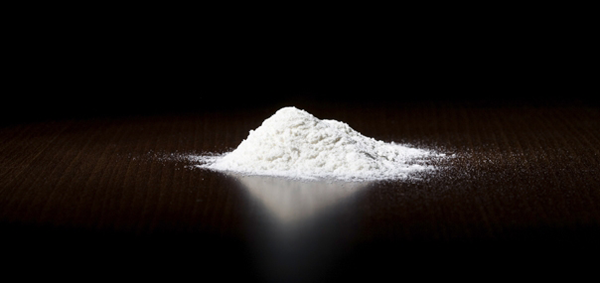Creatine has been one of the most debated, and studied supplements in recent years. It’s also one of the most effective supplements that you can take. It has a ton of benefits like cognitive health, sustained energy, increased strength and power, and also lean muscle growth. The trick is to take the right type of creatine and consume it the right way. In this article I’ll tell you a little bit about this supplement and how creatine can help take your training to the next level.
What Is Creatine?
If you wanna get all scientific, creatine is methyl guanidine-acetic acid [NH2 – C(NH) – NCH2(COOH) – CH3], which naturally occurs in the human body. Your body actually has about 100 grams of this stuff stored already. Most of it exists in your skeletal muscle, and the rest is in your brain, and guys also contain it in their testes.
Basically, our bodies make its own creatine through the kidneys, liver, and pancreas, by breaking down the amino acids arginine, glycine and methionine.
You can increase the amount of creatine in your body through diet and supplementing. Creatine can be found in red meat (steak), and fish (mostly salmon). But the thing is, you would have to eat almost 20 steaks to get the amount of pure creatine that you could consume in one heaping scoop of a supplement.

How Can This Stuff Help Me?
When you take in creatine, it attaches to a phosphate and turns into phosphocreatine, before being stored in your muscles. Phosphate is really important in energy production. Whenever you sprint, lift, or do anything at a high intensity, your body uses ATP for fuel. When the ATP gets used, it loses a phosphate, and turns into ADP. This is where the creatine comes into play.
To turn the ADP back into a useful ATP, the phosphate from the stored phosphocreatine gets used. This means with more creatine in your body, you’ll be more capable to recycle ATP and have sustained energy for more reps in your workout.
The Department of Psychology at University of Swansea, Swansea, Wales, UK did a study suggesting that creatine supplementation can help memory in individuals who don’t get enough meat in their diets. Other studies suggest that creatine can improve cognitive function in elderly people and decrease risk of brain diseases.
If you’re looking for some aesthetic benefits, creatine does that too. Creatine absorbs water molecules into your muscle cells so they will look fuller and more defined. It’s almost like turning a raisin into a grape. That analogy might be a little extreme, but you get what I’m talking about.
It’s not just aesthetics though. Creatine promotes lean muscle growth. Texas A&M did a study on pigs before they were led to slaughter. They fed 25 grams of creatine to one group and left the other group alone. When they killed the pigs, they found that the creatine group had more lean muscle mass. If you need more convincing, a Belgian study put 25 males on a workout plan and gave 8 of them a creatine supplement. The creatine group gained 2 kilograms of lean mass by the end of the study. The others didn’t really gain any mass. They even took into account water retention and came to the conclusion that water weight had nothing to do with it. It was all lean muscle.
So How Do You Eat This Stuff?
Creatine comes in a few different forms. There’s creatine citrate, creatine malate, creatine kre-alkalyn, creatine ethyl ester……..it can be a little overwhelming! The general consensus is that creatine monohydrate is the best form to take. It’s a powder that is used most often in studies, and it’s pretty cheap. The downside to this creatine, and basically every other source is the bloating and possible indigestion.

There are 3 basic ways that you can take this supplement:
Load & Maintain – this is probably one of the most popular ways to add creatine to a diet. For the first week you take 20 grams per day, which is meant to saturate your muscles with creatine, basically just to get you started. The effects of this loading phase are debatable. Some people say you’ll notice a difference much quicker.
After the first week you just maintain your creatine load with 5 grams per day. Normally the scooper that you get with the tub of creatine is a full 5 grams, but if it doesn’t come with one, a heaping teaspoon is about the same amount.
Load & Maintain (Dr. Serrano REMIX) – Apparently a guy named Dr. Serrano didn’t think that taking a set 20 grams per day was quite enough for some peoples’ loading phase. It seems logical that a 250 pound bodybuilder would need a little bit extra compared to a 180 pound wrestler.
Dr. Serrano came up with the idea to load for a week with .35 grams of creatine per kg of bodyweight (1 lb = .45 kg) for the first week. Then for the next 3 weeks you drop the load down to only .15 grams. The 5th week you stop cold turkey, only before cycling on again.
I don’t know if I completely agree with this method, because apparently I would need to take over 40 grams per day on my loading week (I weight 260 pounds). That’s a LOT of creatine. If you’re a brave soul who’s not scared of gastric distress, then by all means have at it.
Slow & Steady – Normally people who do this just take 3-5 grams of creatine at around the same time each day. Most people who choose this route believe that supplement companies only tell people to do a loading phase so that they fly through their creatine supply. That just means you’ll buy another batch sooner and give them more money.
That is quite possible because supplement companies don’t have the cleanest record by any means! Although, people who choose to supplement this way might not see the same results nearly as quickly.
The HUGE benefit to supplementing this way is that you’ll definitely decrease your chances of having bloating and stomach problems.

Either way that you choose to supplement with creatine is perfectly safe. This is one of the most studied supplements around. Not everyone will respond to creatine in the same way, so you may have to kinda test it out, and then make some adjustments.
You should be drinking plenty of water anyways, but it’s even more crucial if you start taking this stuff. Since it absorbs water into the muscle cells, you have to make sure the rest of your body has enough. Not getting enough water will stress out your kidneys and heart.
I would recommend drinking 8 ounces of water with each scoop of powder, and then chase that glass with one more. Personally, I just carry around a gallon of water all day, so my goal is to just finish it. You can go that route as well…..I like it just because there’s less thinking involved.
I hope you found this article informative, and it answered any questions you may have had about creatine. If you have any questions that I left unanswered, don’t hesitate to leave a comment, or fill out a contact form. I’ll personally get back to you right away with my best answer. Please take a second to share this on facebook. If you liked this article then I know you’ll also like The Optimal Amount Of Protein For Growth And Recovery.
 About Adam Pegg
About Adam Pegg



